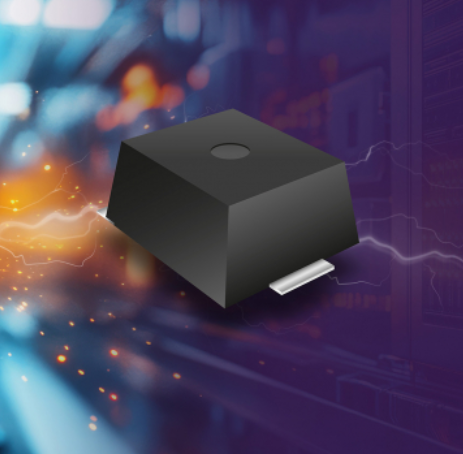Bourns has introduced a 240 V/1 kA Bidirectional Power TVS (PTVS) Diode that offers the highest power density available in a surface mount package.
The Bourns Model PTVS1-240C-M PTVS Diode is designed with advanced silicon processing technology that yields exceptionally high voltage-handling capabilities, and along with the diode’s surface mount packaging, differentiates this transient voltage protector into a league of its own.
Offering 1 kA surge handling capability under 8/20 µs test conditions, the Bourns Model PTVS1-240C-M is ideally suited for a broad variety of systems that employ high-voltage DC bus architectures. These systems commonly experience high current switching transients and dynamic load behaviours where snubbing is needed or protection of bus-powered subsystems is required.
Bourns Model PTVS1-240C-M PTVS Diode is a low-leakage device consuming only 10 µA in standby while delivering a maximum breakdown voltage of 295 V, repetitive standoff voltage of 240 V and precise clamping voltage of 340 V. Under 10/350 µs conditions, this device is rated for 200 A peak current, and its voltage breakdown sensitivity over temperature is an extremely linear 0.1 %/°C. The surface mount package offers a significant reduced PCB footprint and lower inductance design advantages compared to traditional through-hole mounted Power TVS Diodes.
Applications that can benefit from the features and capabilities of the Model PTVS1-240C-M include industrial power systems, motor controllers and inverters, solar inverters, battery energy storage systems, and factory automation.
The Bourns Model PTVS1-240C-M is available now, is UL497B certified and meets IEC 61000-4-5 standard specifications.
Original article source:
https://www.electronicspecifier.com/products/power/bourns-240-v-1-ka-bidirectional-power-tvs-diode
FAQ
- What is the purpose of a TVS diode?
– A TVS diode is designed to protect electronic circuits from transient voltage spikes by clamping the voltage to a safe level and diverting the excess current away from sensitive components.
- What does “bidirectional” mean for a TVS diode?
– A bidirectional TVS diode can protect against voltage transients in both positive and negative directions, making it ideal for AC circuits or data lines where polarity may change.
- What is the maximum voltage rating for the Bourns 240 V TVS diode?
– The diode is rated for a standoff voltage of 240 V, meaning it can continuously withstand voltages up to 240 V without conducting or clamping.
- What is the peak pulse current rating of this diode?
– The peak pulse current rating is 1 kA (1000 A) for an 8/20 µs waveform, which means it can handle a surge current of up to 1000 A for a short duration.
- How does the diode clamp voltage during a surge event?
– When a transient voltage exceeds the standoff voltage, the diode becomes conductive and clamps the voltage to a lower, safe level, typically known as the clamping voltage. The clamping voltage is usually higher than the standoff voltage.
- What are the common applications for this TVS diode?
– Applications include protection of power lines, automotive electronics, telecom equipment, industrial control systems, and other sensitive electronic circuits exposed to potential transient voltages.
- What package types are available for the Bourns 240 V/1 kA TVS diode?
– Bourns offers this type of TVS diode in various packages, including surface-mount device (SMD) and through-hole designs, depending on the specific model.
